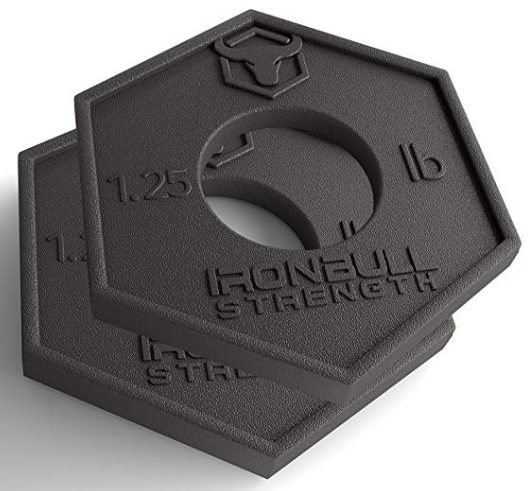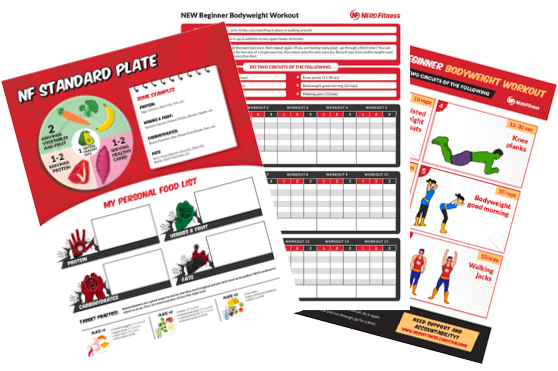So you want answers to the question, “What is Progressive Overload?”
Well my friend, you’ve arrived at the perfect place.
Progressive overload is one of the key principles of strength training, which is why we focus on it extensively with our coaching clients. Today, we’ll share these same principles with you too.
Here’s what we’ll cover today:
- What is progressive overload?
- How do I overload my muscles? (8 ways to progressive overload)
- How do I know when I’m ready for progressive overload?
- How much weight do you add to progressively overload?
- Is progressive overload bad for you?
- Do you always have to progressively overload?
- How to continue to grow strong (next steps)
Alright, let’s do this thang.
What Is Progressive Overload?
In the video above, I walk you through the ins and outs of progressive overload.
First, let’s give a definition:
For strength training, progressive overloading is doing slightly more than last time – like lifting a heavier weight or doing one more rep.
The name of the game is overloading our current capabilities, slowly but surely.
By doing this consistently, we get stronger – since our bodies adapt to the ever-increasing demands placed on them.
Said another way, without overload, there is no adaptation by the body.
When you challenge your body through resistance training, it responds with:
- Neuromuscular adaptations and increased coordination. After some resistance training, the nerves in your muscles will fire better, making them more responsive. Plus, the more you do a movement, the better you’ll get at it (coordination).[1]
- Increased muscle and bone mass. When you subject your muscles and bones to resistance training, they grow larger and stronger.[2]
- Improvement in connective tissue strength. Not only will your muscles grow stronger after progressively overloading them, but so will all the connective tissue (tendons, ligaments, etc.).[3]
- Increased lactic acid tolerance. When you exercise intensely, lactic acid will build up and eventually slow you down. But the more and more you progressively overload, the more of a tolerance you’ll build up to lactic acid.[4]
Don’t worry about the terminology here.
You can think of progressive overload much like a video game:
- When you start an RPG, the first bad guys you encounter will be weak. They only give you a little bit of XP for defeating them. They’re probably rats or slimes or something.
- Once you beat a bunch of these rats, you’ll accumulate enough XP. Then you can level up and fight something else (a goblin perhaps).
- As you keep fighting tougher and tougher enemies, eventually, you’ll be able to take down a dragon!

Working out is the same thing:
- At first, you might only be able to do push-ups against a wall. NBD! Knock out these wall push-ups until they start feeling easier, then begin doing push-ups on a counter-top (this is progressive overloading!).
- Continue to put in the work and decrease the height of your push-ups. Eventually, you’ll be doing them on the ground!
Congrats, dragon slayed!
So whenever you’re following a progressive overload strategy, just tell yourself “I am earning XP here to grow strong.”
How Do I Overload My Muscles? (8 Ways to Progressive Overload)

There are all sorts of ways for you to achieve progressive overload.
Here are eight strategies for increasing work and overloading your muscles:
#1) Increase the weight. This is the most common way to make a weighted exercise in the gym more challenging. We’ll talk a bit later about how to choose the correct weight.
#2) Increase the reps. This is the other most common way to make things more challenging. So instead of 10 push-ups, go for 11. Then 12 the next time. And so on.
#3) Increase the sets. So instead of doing 3 sets of 10 push-ups, you can do 4 sets of 10 push-ups, then 5 sets of 10 push-ups, etc.
#4) Increase the frequency of your workouts. Let’s say you work out twice a week, Monday and Thursday. Maybe we add an extra day, so Monday-Wednesday-Friday. That way we get more total work in for the week.
#5) Decrease rest time. Instead of increasing the weight, or reps, or sets – you simply decrease the time you rest between sets. This will tax your body more and might be a good option for some, based on their goals and schedule (especially if you are short on workout time already).
#6) Doing more difficult variations. This is relevant for bodyweight exercises in particular, where we’re not adding weight to anything.
You could go from assisted lunges:
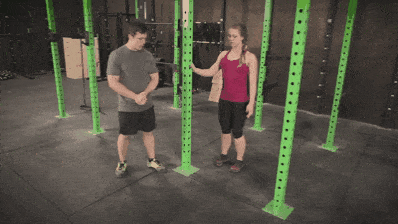
To regular lunges:
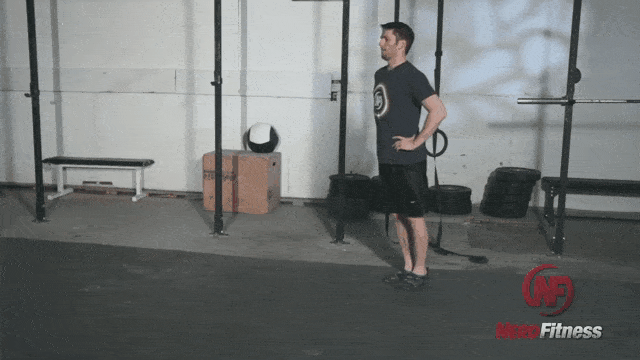
Or back to the example of push-ups, you can do them against a wall, then a counter-top, then the floor.
Switches like that would make the movement more challenging, and thus an overload strategy.
#7) Slow down through the range of motion. Play around with the exercise tempo! If you take a longer time to do a push-up, you’ll increase the time your muscles are under tension and working.
#8) Hold the position. Just like slowing down, this will increase the time under tension for the muscles, and therefore more work. You could pause at the bottom of your squat:

Or at the top of a chin-up:
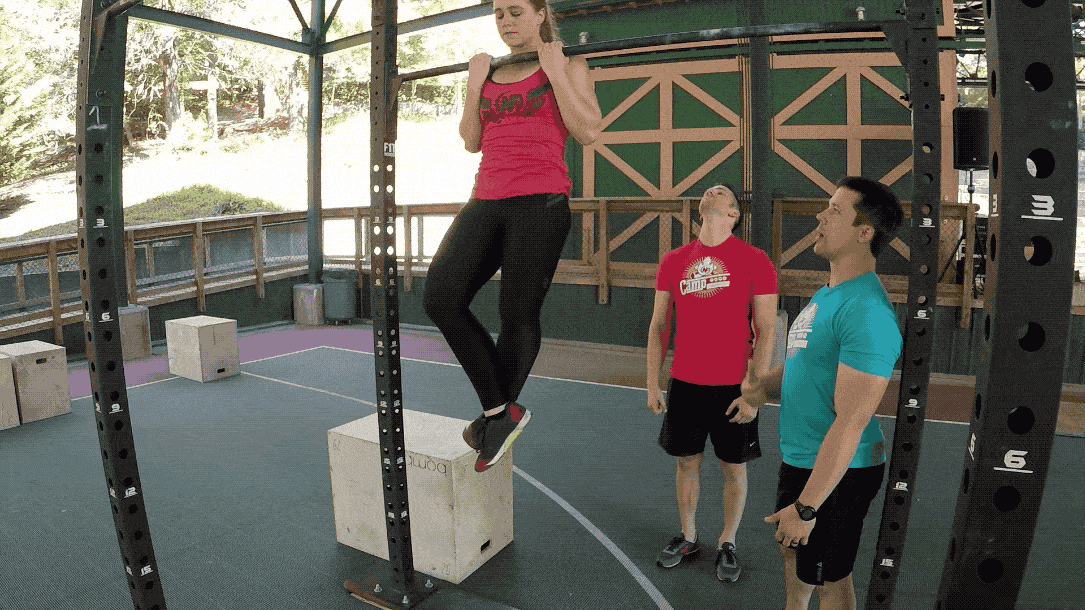
Boom!
For any given workout, there’s likely a way to make it more challenging, and thus, perfect for progressive overload.
Let’s now chat about when to make an exercise more difficult.
How Do I Know When I’m Ready for Progressive Overload?

The key to progressive overload is continuing to make a workout more and more challenging.
How do you know when it’s time to move up?
Unfortunately, you won’t start glowing with stars after you’ve completed a certain number of workouts.

We’ll probably have to wait for the “singularity” for that.
However, you’ll know when you’re ready to increase weight or intensity when you complete the prescribed number of sets and reps for an exercise, and you still feel like you could do a few more reps.
This will happen MUCH more often for a beginner.
Here’s what’s going on:
When you just start working out, you’ll adapt and progress quickly. Much of this is just from improved coordination and comfort with the exercise.
That means you’ll be able to progressively overload at a faster rate – likely adding weight or intensity every workout or every week.
It’s important to understand that progressive overload won’t continue upwards forever.
For example: If you started benching 45 pounds, and added 5 pounds every week, after two years you’d be benching over 500 pounds.
Which would be insane…

But that’s not how it works.
After a while, progress will go slower and slower.
You may even plateau and sit at a certain intensity for several weeks or more. That’s ok.
It’s hard to say how long you’ll be at each stage.
How fast you can progressively overload depends on a lot of factors, such as:
With that being said, don’t be afraid to test the waters with a more difficult exercise. You can always go back down if it doesn’t feel right.
But do move up from time to time. It might surprise you how much more you can handle!
How Much Weight Do You Add to Progressively Overload?

Normally, we recommend going up in small increments when adding weight to your exercises.
For barbell lifts, adding 5 pounds (or about 2.5 kilos) to each side is generally a good rule of thumb.
That would be an increase of 10 pounds or 5 kilos for the entire lift.
So you might go from benching 75 to 85 lbs.
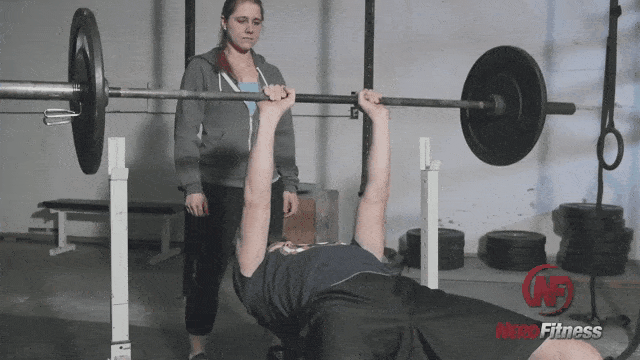
This rate of increase is an average recommendation but may differ based on what exercise you are doing.
- For upper body lifts, this may be too much of an increase for you.
In that case, look to add 2.5 pounds or about 1 kilo – to each side of the bar.
That would be an increase of 5 lbs or 2 kilos for the entire lift.
If that’s too much of an increase, there are smaller fractional plates that allow you to increase weight in even smaller quantities than that.

- For lower body lifts, we may want to add more weight – so 10 pounds – or about 5 kilos to each side of the bar.
That would be an increase of 20 lbs or 10 kilos for the entire lift.
So you might go from deadlifting 135 lbs to 155 lbs.
For either case, if you are using dumbbells, increase the weight of the dumbbell by whatever amount you’d add to the side of the bar (e.g. 5 lbs per side = 5 lbs per dumbbell).
If you’d like more here, check out our guide How Much Weight Should I Be Lifting?
Is Progressive Overload Bad for You?
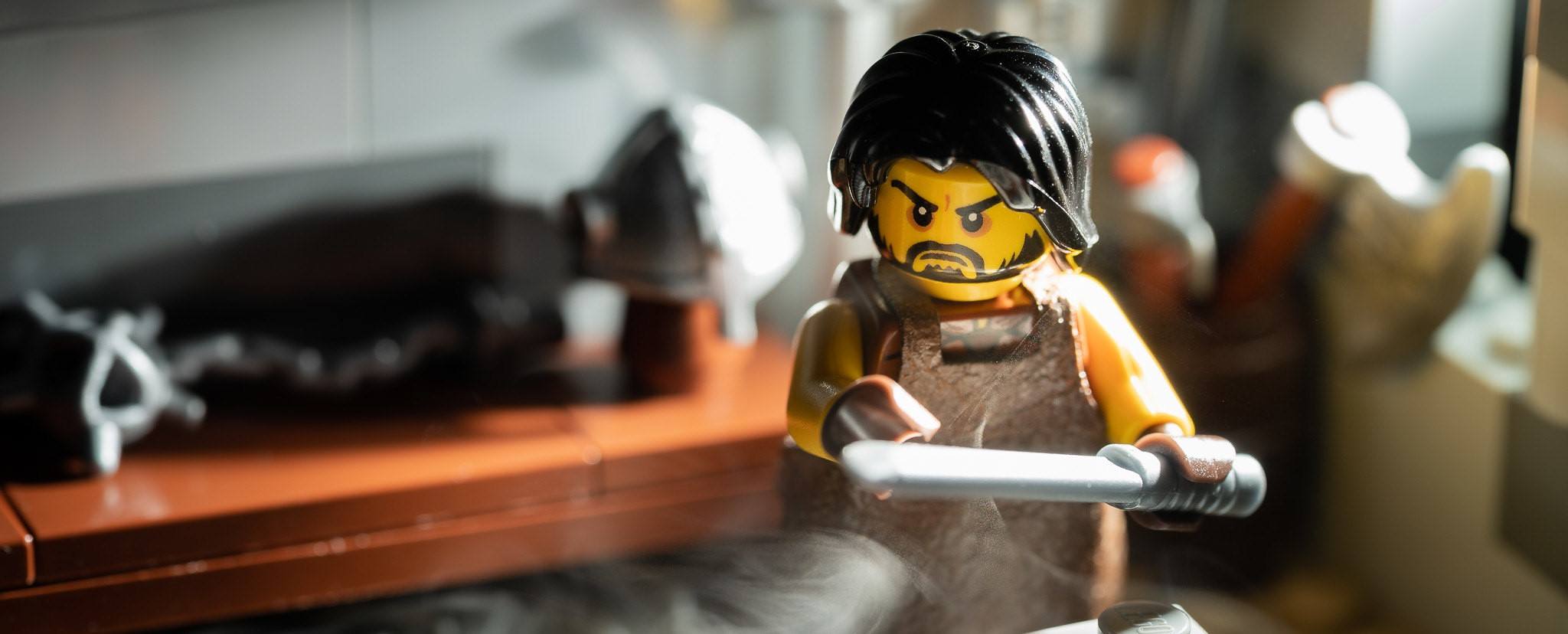
The biggest danger with progressive overload simply comes down to increasing faster than your body can adapt.
Are you ready for handstand push-ups?
Is a 315-pound deadlift a big jump in weight for you?
There’s nothing inherently dangerous about those movements. BUT, I have seen plenty of folks rush to do more…then not be ready.
That’s how you can end up hurt.
So start your training by doing less than you think, including lifting just the bar – or even a broomstick:
When you’re adding more weight or increasing the intensity of an exercise, go in small increments.
There’s no rush.
Do You Always Have to Progressively Overload?

Do you always have to keep increasing the weight or difficulty or reps that you’re doing?
No!
It’s perfectly fine and normal to hold steady at a certain level.
You are still moving around and getting a ton of great benefits, like:
- Improving your mood.[5]
- Helping with weight loss.[6]
- Keeping your bones strong.[7]
- Making you more energetic.[8]
- Reducing your risk of chronic disease.[9]
Don’t let the thought of “needing” to continuously work harder scare you off from exercise.
It’s up to you how far you push things, and there is no right decision for everyone. Do what works best for you.
How to Continue to Grow Strong (Next Steps)

There you have it, my friend.
A step-by-step plan on how to progressively overload.
Let’s now leave you with some workouts, so you can get started TODAY.
After all, you can’t progress if you never get going.
Here are three guides to help you start overloading your muscles:
- Beginner Bodyweight Workout. This 20-min routine can be done ANYWHERE. Yep, even there. If you don’t know how to start working out, start here.
- The Best 8 At-Home Workouts. Once you get cozy with our beginner workout above, the funs just getting started. From there, you can learn moves designed for a Jedi Knight, train like Batman, or even just do push-ups against a wall. It’s all covered in this home workout guide.
- The Beginner Guide to the Gym. If you’re heading to the gym for your path to overload, read this. Our guide will show you how to use everything from a treadmill to a weighted barbell.
Alright my friend, you got this.
If you want any more help from us, here’s how to continue your journey with Nerd Fitness.
#1) Our Online Coaching Program: perfect for someone who wants an expert (like me!) to design the right path for progressive overload. We’re all different, so why not have a coach guide you through a program that’s custom-made for you?
You can schedule a free call with our team so we can get to know you and see if our coaching program would be a good fit. Just click on the image below for more details:
#2) If you want a daily prompt for doing workouts (that grow more and more challenging) check out NF Journey. Our fun habit-building app helps you exercise more frequently, eat healthier, and level up your life (literally).
Try your free trial right here:
Next Step Number #3) Join the Rebellion! We need good people like you in our community, the Nerd Fitness Rebellion. You’ll meet individuals from all different walks of life, all of whom are trying to level up their lives.
Sign up in the box below to enlist and get our Rebel Starter Kit, which includes all of our “work out at home” guides, the Nerd Fitness Diet Cheat Sheet, and much more!
Alright, I want to hear from you:
What’s your plan for progressive overload?
Are there tips or tricks I’m missing?
Have you been stuck at a certain level for a while?
Let me know in the comments!
-Jim
PS: If you’re interested in growing strong, make sure you read Strength Training 101: Where Should I Start?
###
Photo source: Him-Dude, Him-Dude II, LEGO VIDIYO minifigs, LEGO Bench Pressing, Hammer and forge yourself into the best artist you can be, Shower Guy, Mountain Biker


